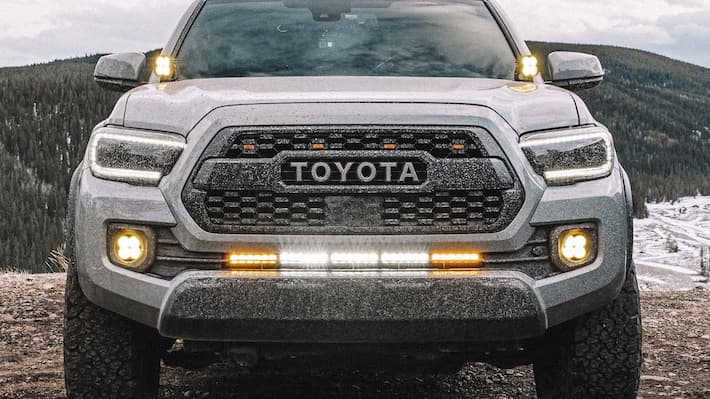Have you ever rolled to the mouth of a rocky trail and felt equal parts excitement and worry about what the next mile might do to your truck? The gear you bolt on often decides which voice wins that tug of war.
You don’t need a rig that looks like a catalogue page to venture off pavement, yet the right handful of upgrades brings real protection, easier recoveries, and a smoother weekend haul. Picking those pieces becomes simple once you know what protects the parts that break first.
What Supplies Do You Need for Off-Roading?

When tires first leave the highway, rocks and ruts attack the lowest and most exposed parts of a vehicle. Good gear shields those weak spots, helps you self-recover, and still lets you haul camping cargo. The three upgrades below cover that job and mount to the most popular 4×4 platforms.
Off-Road Bumper
Among all bolt-on parts, durable and high-performing off-road bumpers sit at the top of many wish lists because they guard the nose of the truck, the area that usually meets the obstacle first. A strong front bumper starts with a thick steel or aluminium plate shaped to follow factory body lines, while hidden gussets spread impact into frame rails instead of letting fenders crumple. That layout shields the grille, radiator, and headlights from rocks and stumps and gives you a flat spot for a winch, recovery points, and extra lighting.
Rear off-road bumpers fight a different battle. Steep departures can peel thin sheet metal, and a stock hitch receiver bends when you yank on it sideways. Upgrading to a rear replacement adds welded shackle plates, keeps the receiver centred, and often includes a swing-out tire carrier that moves a 37-inch spare off the tailgate hinges. You gain space for a high-lift jack mount or a fuel can without blocking the rear camera.
You will also run into tube models, hybrid shells, and low-profile light bar bumpers. Tube bumpers use round DOM or HREW steel; the gaps between tubes dump mud fast and keep weight low, but plastic end caps remain exposed. Hybrid bumpers blend a boxed centre with tube wings, delivering winch support plus extra tire clearance on sharp approach angles. A low-profile design with a slotted shelf for a single-row LED bar lights the trail while leaving airflow to the intercooler wide open.
Mounting brackets matter as much as the face you see. Bolt-on brackets that match factory crash bar holes shorten install time, yet weld-in plates create a stiffer base if you jump ledges every weekend. Whichever route you choose, add frame tie-ins if the kit left them out; you will feel the difference the first time you jerk a friend out of a sand pit.
Weight deserves thought, too. Steel shrugs off dents from boulders, but stacking steel at both ends can slow spring rebound and hurt steering on long washboard roads. Pairing an aluminium shell with a steel winch cradle drops twenty to thirty pounds, which helps the front coils cycle and keeps the wheel lighter in your hands.
Recovery Winches
Momentum fades halfway up a wet hill, but a winch turns that moment into a short pause instead of a day-long dig. Aim for a pull rating at least one and a half times the gross weight of your vehicle. Synthetic rope drops weight and floats in water; steel cable resists heat and abrasion. Carry a tree saver strap, two shackles, and a snatch block in the same locker because a winch without rigging is a shiny hood ornament.
Modern winches rely on sealed contactors rather than old solenoids, keeping water out and current steady during heavy pulls. Look for an integrated wireless remote so you can stand clear of tensioned lines. Many makers now build load-limiting sensors that cut power before the motor cooks, a smart layer of insurance on steep climbs. If your bumper supports a recessed tray, use it; placing the drum lower maintains airflow to the radiator and keeps your line angle flatter when you anchor to a stump ahead.
Skid Plates
Sharp rocks hide under soft soil, and one completely unexpected hit to an oil pan can wreck an entire weekend. A full-length skid package shields the radiator crossmember, steering rack, front differential, transfer case, and fuel tank in one linked sheet. Modular sets break the protection into sections that bolt to existing threaded holes, letting you drop only the panel you need during service. Aluminium trims as much as 40% of the weight of steel, yet it dents sooner. Steel slides better and lasts longer, but it asks a bit more from your springs.
Look for plates with recessed bolt heads so nothing shears on a ledge. Drain ports aligned with factory oil plugs save time when you change fluids on cold gravel. Some plates arrive with built-in louvres that guide air past the transmission pan so temperatures stay in check during long climbs. Add a rear differential skid if your axle housing sits low; it wraps the pumpkin and keeps the fill plug reachable without breaking the seal.
Regular checks count here. Tighten mounting bolts every few outings, knock out dents, and spray exposed steel with paint after river crossings to stop rust before it starts. Staying proactive pays off in the long run.



